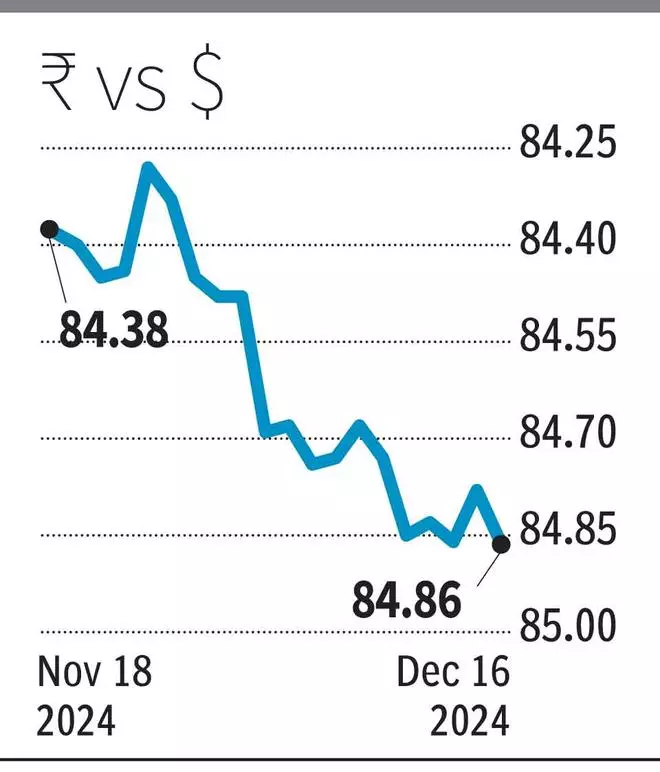The rupee closed at an all-time low on Monday, hit by a host of factors including a rise in US Treasury yields, a weaker Chinese yuan, India’s merchandise trade deficit widening to a record high and a slide in domestic equity markets.
The rupee closed at 84.8625 per US dollar, down by about 8 paise from its previous close of 84.7875.
Forex dealers say the rupee will remain under pressure as long as US treasury yields rise and the yuan weakens.
India’s merchandise trade deficit reached an all-time high of $37.8 billion in November, from $27.1 billion in October. A wide trade deficit has a debilitating effect on the currency.
Amit Pabari, MD, CR Forex Advisors, said with all eyes on the Federal Reserve, the CME FedWatch tool indicates a 94 percent chance of a 25-basis point rate cut, making the total rate cuts for the year. 1 percent.
However, the real spotlight will be on Fed Chair Powell’s post-meeting comments. As Donald Trump prepares to take over the White House next month, the potential impact of his tariff policies and macroeconomic agenda will undoubtedly impact market sentiment and weigh heavily on the Dollar Index.
“If Powell takes a dovish stance and signals continued rapid rate cuts in 2025 – possibly given the huge national debt burden on the US, this could put pressure on the dollar index. In the medium term, the dollar index is projected to move towards 103 levels while facing strong resistance near 108. This shift will, in turn, provide much-needed support to emerging market currencies,” Pabari said.
trade deficit
ICRA Chief Economist Aditi Nair said India’s merchandise trade deficit widened amid an unprecedented $14.9 billion surge in gold imports in the month along with a relatively modest increase in other imports.
“Such a high level of gold imports was probably driven by festive and wedding-related demand and is unlikely to be sustained in the coming months, which will help narrow the upcoming merchandise trade deficit.
“Nonetheless, the adverse trade deficit print for November will result in India’s current account deficit (CAD) rising faster than expected to 2.8 per cent of GDP in Q3FY25, compared to the earlier expectation of ~2.0 per cent , which will be the highest level in two years,” Nair said.

ICRA revised its FY2025 forecast for CAD to ~1.4 percent of GDP from ~1.0 percent earlier.
